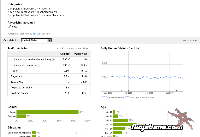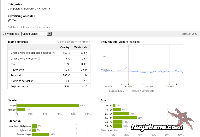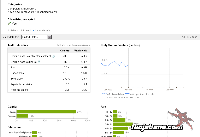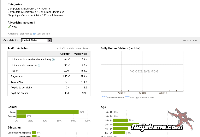After careful consideration I have decided to transfer all hardware review activities to a new domain. I purchased Hardwareasylum.com in 2012 and have been working hard to build a new and improved Ninjalane on that domain. If you are reading this you have reached one of the archived articles, news, projects and/or reviews that were left behind during the site migration.
Please update your bookmarks and be sure to visit the new and improved Ninjalane at Hardwareasylum.com
The Dark Art of Inflating Traffic
Author: Dennis Garcia
Published: Monday, January 25, 2010
How do you spot a traffic pumper?
The important thing to know when spotting a traffic pumper is understanding how to identify trends. This isn't a perfect science, meaning that anything is possible. However, in most cases, when things get pushed to the extreme, the likelihood of there being any error becomes smaller.
If it looks like a duck and quacks like a duck, it's probably a duck. The same goes for this. If something doesn't look right, it likely isn't.
So take a look at the screenshots below. These were obtained using Google Adplanner, a tool designed to help advertisers plan their campaigns and get basic site details. I've blurred out the site data to protect the guinea pigs (and no, none of these sites are Ninjalane.com).
These screens are what I would consider normal traffic metrics for websites like Ninjalane.
If it looks like a duck and quacks like a duck, it's probably a duck. The same goes for this. If something doesn't look right, it likely isn't.
So take a look at the screenshots below. These were obtained using Google Adplanner, a tool designed to help advertisers plan their campaigns and get basic site details. I've blurred out the site data to protect the guinea pigs (and no, none of these sites are Ninjalane.com).
These screens are what I would consider normal traffic metrics for websites like Ninjalane.
Google Adplanner
Notice unique visitors. This correlates to the unique IP addresses of visitors to the site per month. The higher this number is, the greater the reach of the website. It basically means that the content on the site is compelling to new users.
Page views is a total number of pages that each person loaded for that month. Of course, this is one metric that advertisers look for. Higher page views and unique visitors each month means that more eyes fall on the banners.
Average visits per visitor is a metric that describes how often a visitor comes back to the website. You can use this number to offset page views in a way, because when people return to a website, it's not a unique hit, but does speak to the stickiness of the content. It also speaks to the strength of the community and indicates guaranteed traffic to the site.
The last metric to look at is Average time on site; this one describes an average of how long any particular site visit will last per user. Again higher numbers are better, however extremely high numbers is very suspect.
Page views is a total number of pages that each person loaded for that month. Of course, this is one metric that advertisers look for. Higher page views and unique visitors each month means that more eyes fall on the banners.
Average visits per visitor is a metric that describes how often a visitor comes back to the website. You can use this number to offset page views in a way, because when people return to a website, it's not a unique hit, but does speak to the stickiness of the content. It also speaks to the strength of the community and indicates guaranteed traffic to the site.
The last metric to look at is Average time on site; this one describes an average of how long any particular site visit will last per user. Again higher numbers are better, however extremely high numbers is very suspect.





